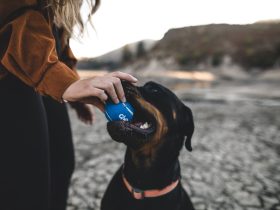Dog Training Aids
My Dog Doesn’t Come When I Call—What Should I Do?
Possibly one of the first things that owners teach their dogs is how to respond to their own names. This is crucial for any owner-dog relationship since owners need to call for their dogs to follow commands, to correct inappropriate behavior and to inform them of danger.
Just like a leader to a pack of dogs, he has to communicate to his pack time and again. An unresponsive member is a sign of poor training and has to be corrected as soon as possible.
If your dog does not come when you call him then there must be something wrong with your training. When you want a puppy to learn his name, you naturally call your dog by his name at an early age. He gradually learns his name as you interact with him and reward him and soon enough, he would come immediately over when you call.
A larger dog could be different. Any negative experience such as telling him off when he comes could ruin all your hard work. For instance, you are practicing calling your dog to come to you. You yell “Here Spike” in a very energetic manner. As Spike comes over, you tell her “off!” This immediately confuses your dog as to what you really mean! Do you really want him to come over or do you want him to go?
Confusing your dog could lead to inappropriate behavior and thus Spike would never respond to calls to come again. Unless his training is improved he will never be able to progress to other more difficult training exercises.
What You Must Do
- Call your dog in the most energetic way. Say “Come Spike!” when you are in front of him and show this with hand actions or by patting your shin. You can also whistle after you say your command to mean that he has to come over right now.
- Be ready to reward your dog with a treat or praises to tell him that he has done a good job. Pat him on the head or give him a rub. Afterwards do the exercise again and this time in another environment such as the outdoors, with a family member or with a neighbor next to you.
- As your dog expects a treat or a nice reward when he comes over, try to change the experience. “Good Boy”, that phrase really doesn’t get old. This action can be associated to your dog on a daily basis and he does not have to be completely rewarded afterwards.
- Use the long line technique. If your dog would not respond, pull on his line to signal that you want him to come to you. repeat the training until you don’t need to use a long line to call him anymore. You can use this in training puppies or older dogs as well.
- Most of the time your dog may dislike coming to you especially during the end of a play date or when you need to take him inside the car, you can practice by using a treat or his favorite toy so he would know that he would be rewarded for good behavior. Always reward him when he comes to you especially during situations that he dislikes.
The secret is to call your dog, reward him and then immediately release him. Learn how to use the power of rewards and affection and withholding affection as well. By using these techniques, you will be able to teach your dog how to come when you call even during situations that he dislikes.










Leave a Reply